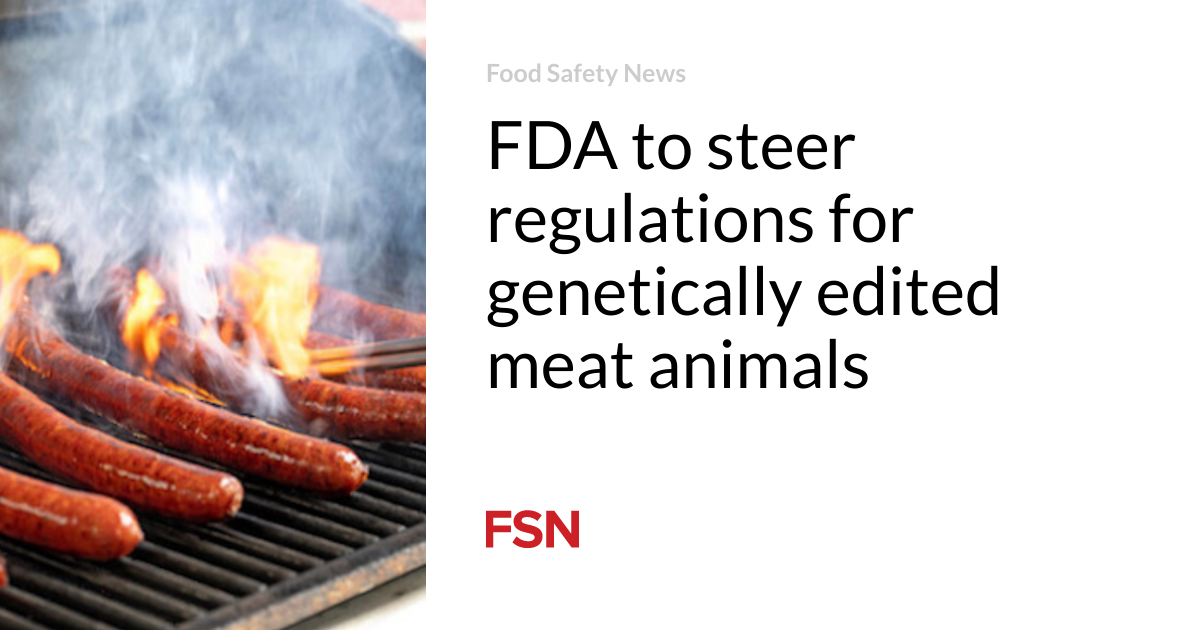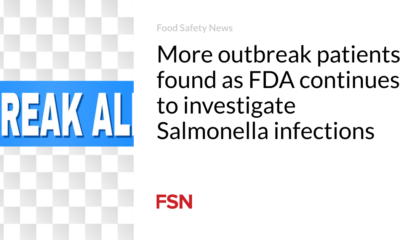Food
FDA will guide regulations for genetically edited meat animals

Gene editing of meat animals is sometimes called “the next big thing in agriculture” and extends from research labs, livestock farms, and even the federal government’s right to our plates.
Last month, the Food and Drug Administration announced it would lead the regulatory process to bring gene-edited meat to market.
Tracey Forfa, director of the FDA’s Center for Veterinary Science, linked this role to the need “to keep our regulatory approach current with the evolution of the science.”
“We recognize that innovations in animal biotechnology offer tremendous opportunities to advance human and animal health,” she said.
What is gene editing?
Gene editing, often called CRISPR, allows researchers to switch off a gene or add one for a desired trait by altering a gene at a specific location in the genome. Think of scissors; only in this case it is enzymes that do the work. The enzymes allow researchers to precisely insert or delete genes into the DNA of an animal or plant, with the intention of improving its health, productivity and nutritional benefits.
A genome is the complete set of DNA (genetic material) of an organism. In the case of humans, for example, almost every cell in the body contains a complete copy of the genome. The genome contains all the information a human needs to develop and grow.
Not GMOs
Gene editing is not genetic modification, which involves an entirely different technology in that it involves inserting DNA from an external species into the genome of an organism.
In the case of GMO salmon, for example, these fish (like all other GMO animals) possess foreign DNA that could never have arisen in nature without humans purposefully introducing the foreign DNA.
Gene editing, on the other hand, only works within a species’ own DNA. The goal is to bring about desired changes that in the past would only happen with traditional breeding practices. For centuries, farmers have relied on selective breeding, where animals with desirable traits are bred with others without those traits, to improve food production and meat quality. Obviously, achieving this goal takes a lot of vicissitudes, not to mention a lot of time – sometimes generations. That’s why gene editing is often called “a high-tech form of selective breeding.”
Just last year, the FDA gave its first thumbs up to pork from genetically modified pigs when it authorized a specific group of genetically modified pigs to enter the human food chain.
The pigs were a mix of commercial breeds and reflected what a standard pig farm would have.
Once again the goal was to develop desirable properties for better food production.
“Our gene editing does not involve incorporation of foreign DNA; rather, they were changes that could occur in nature,” said WSU researcher Jon Oatley.
He calls gene editing a modern ‘cutting-edge technology’.
Oatley said his research team will seek food use approval for other meat animals, such as cattle, sheep and goats, and estimates that animals produced in this way could reach commercial scale within five years. In other words, consumers will soon have access to genetically modified meat.
And no, it is not labeled as such. at least not at the moment.
“If a label were required on edible products from an animal with CRISPR-edited DNA, we would also need to label all products, because traditional selective breeding also produced genetic combinations created by human intervention,” Oatley said. .
What about food safety?
Oatley said as long as standard food safety practices are followed in raising, packaging and cooking the meat, it will be free of foodborne pathogens.
The Food and Agriculture Organization, which has assessed food safety issues related to gene editing, points out that while approaches may differ, many countries have found a way to include genetically edited foods into the existing regulatory category to address such issues.
In conclusion, according to a recent FAO report, “the potential effects of gene editing on food safety, quality and trade are not expected to be much different from such effects on foods resulting from pre-existing breeding techniques.”
Not that there aren’t warnings against allowing gene-edited meat animals to pass easily here. According to a report from Friends of the Earth, new genetic engineering techniques, such as gene editing, are risky and could have surprising consequences for people and the planet.
Furthermore, the organization says that because gene editing involves ‘cutting’ the DNA, after which the cut DNA is repaired by the cell’s own repair mechanism, these techniques result in GMOs.
Although many scientists and scientific reports say that GMOs are safe, controversy swirls around the topic, with some opponents claiming that GMOs are being introduced into the food supply either as a means to enrich farms or as a way to poison the population or to calm down.
Why the FDA?
According to scientists familiar with the subject, the FDA is the logical agency leading the regulatory process. They point out that the agency has a mandate to protect human and animal health, while the USDA “doesn’t have the same kind of overriding public health mission,” said Dr. Peter G. Lurie, chairman of the Center for Science in the Public Interest. .
In May 2024, the FDA released guidance stating that the agency will be primarily responsible for regulating genetically engineered animals.
In recent years, the agency has ramped up the approval process for genetically modified meat.
In 2022, the agency ruled that there were little to no safety risks associated with Acceligen’s beef cattle, which are genetically modified to grow shorter hair and are therefore better equipped to handle higher temperatures.
Last year, Washington State University also received FDA approval for German-style sausages made from genetically edited pigs.
“These technologies hold promise for many public and animal health applications and benefits, such as resistance to animal diseases, control of zoonotic disease transmission, improved husbandry, and increased food production and quality,” said Tracey Forfa, director of the Center for Health from the FDA. Veterinary medicine, in a statement.
“We’re just driving to the margins,” Ag Tech Accelerator CEO John Dombrosky said in an earlier interview with Bloomberg News. “Gene editing will do amazing things across the agricultural continuum, and the promise is simply enormous. We will be able to refine food for amazing health and nutritional benefits.”
(To sign up for a free subscription to Food Safety News,Click here)













